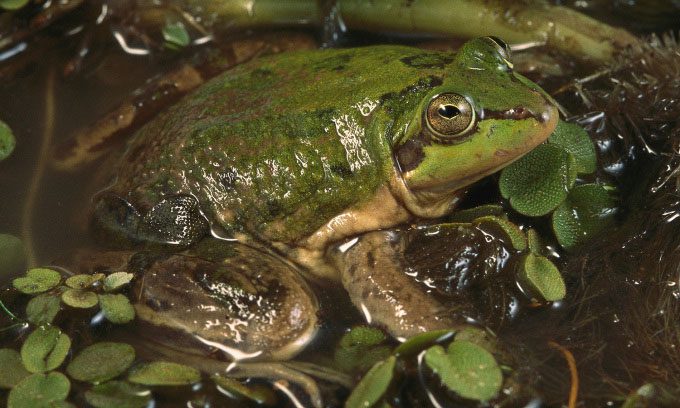The paradoxical frog is only about 8 cm long, while in its tadpole stage, it can grow up to 22 cm.
The paradoxical frog (Pseudis paradoxa), also known as the miniature frog, is commonly found in northern South America and Trinidad. They primarily feed on invertebrates, mainly insects. While this might sound typical, these frogs are quite different from other species. This peculiar creature actually decreases in size as it matures.

The paradoxical frog is smaller as an adult compared to its tadpole stage. (Photo: Minden Pictures).
In their larval stage, they are significantly larger than in their adult form. Specifically, the tadpoles of the paradoxical frog can be 3 to 4 times larger than the adult frog. While tadpoles can reach lengths of up to 22 cm, adult frogs only measure about 8 cm. Other species within the Pseudis genus also experience this unusual size change, but the paradoxical frog holds the record for the longest tadpole.
So why do the tadpoles of the paradoxical frog grow to such a large size? According to a study published in the Herpetological Journal in 2009, the growth rate of the tadpoles is similar to that of other species, but they continue to grow and develop. By the time the tadpoles undergo metamorphosis into adult frogs, the males have started producing sperm, and the females are developing eggs—a process that usually occurs during the juvenile frog stage.

Model of adult paradoxical frog and tadpole in the Natural History Museum, London. (Photo: Chipmunkdavis).
In a study of another frog species within the Pseudis genus, researchers examined the skeletal development of the tadpoles and found that the skeleton had developed nearly fully or completely by the end of the metamorphosis process.
The giant size of the tadpoles is primarily due to their long tails. Before metamorphosing into adults, the length from mouth to cloaca (body length) of the tadpoles is also comparable to that of the adult frogs.
For most other frog species, after metamorphosis, the froglets initially are small but grow larger over time. However, since the tadpoles of the paradoxical frog develop over a longer period than other species and are quite well-formed by the time they undergo metamorphosis, the adults experience little to no growth. The loss of the tail is what reduces the size of the miniature frog.


















































